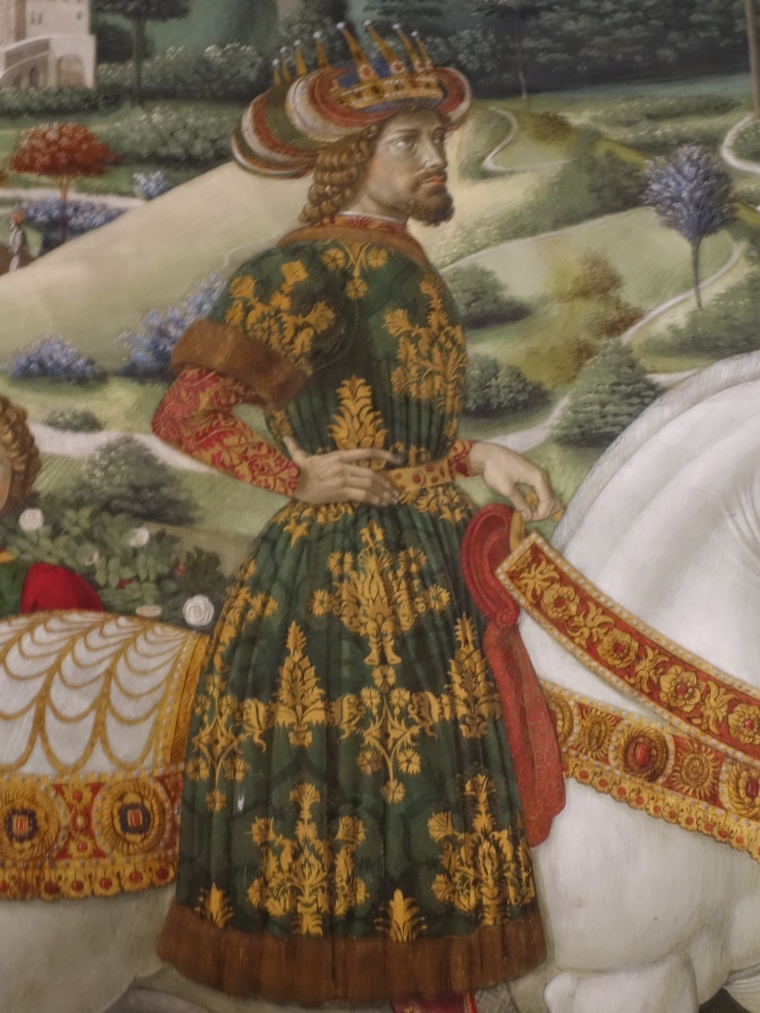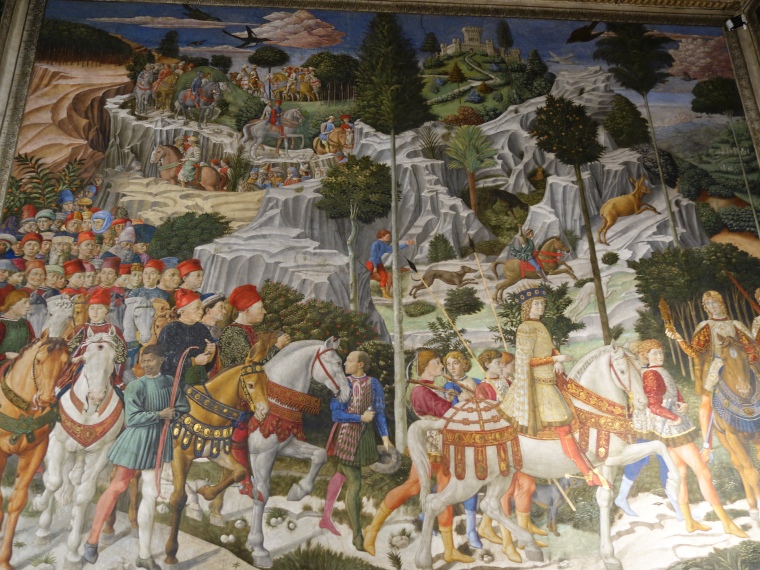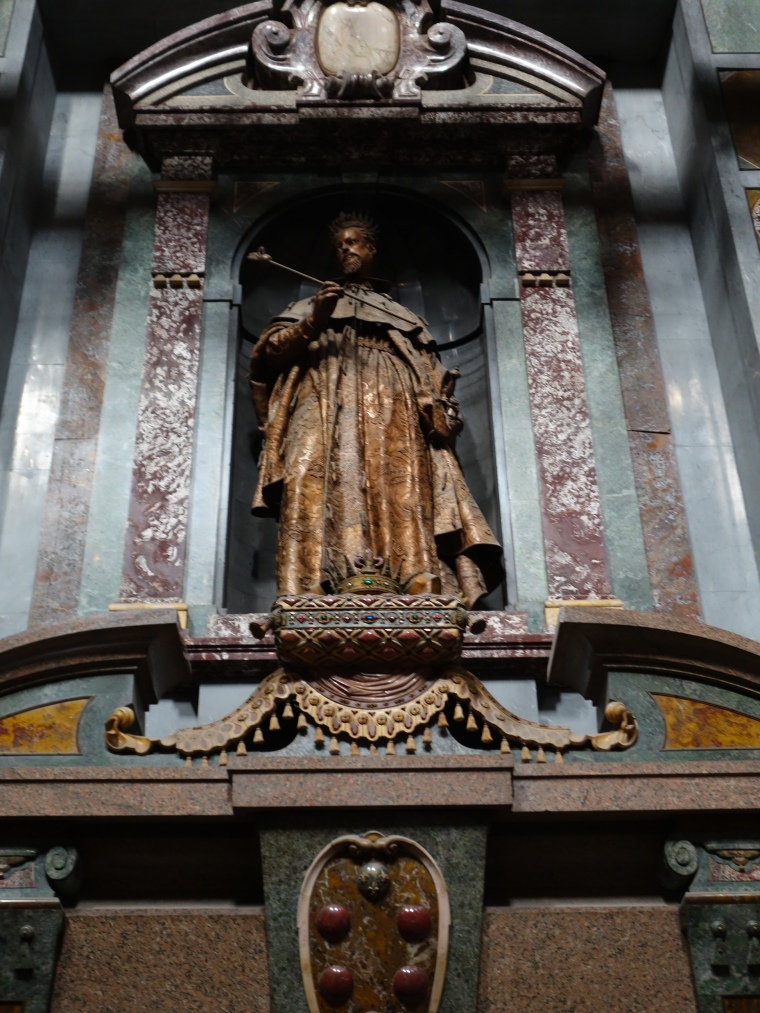We were lucky enough to be able to spend a week in Florence, just after the New Year holiday. The weather was cold, but clear, so we were able to get quite a lot of walking done.
Since most of what there is to see in Florence involves this is going to be an extended art and history post, with a lot of photos — so many, in fact, that I may have to divide the material among several posts. If you are really into this stuff, like we are, and want even more photos (with captions) you can go to my Google photo album.
Florence and the Medici
In order to understand why there is so much fabulous art in Florence, you first need to know a bit about the Medici. The Medici were Florentine bankers who came to prominence in the 15th C, and whose principal client was the Pope. (How there could be such a thing as “the Pope’s bankers” in an age where usury was still a sin is a fascinating story in itself, but one for another day.)
Florence at that time was a republic – noblemen, in fact, were barred from city government. The city was administered by a rotating council of prominent citizens whose terms lasted only two months. The early Medici (Cosimo the elder, his son Piero, and his grandson Lorenzo the Magnificent) held no official leadership roles, and rarely served on the governing councils. But somehow no important decisions in Florence were ever made without them.
All the early Medici were enthusiastic supporters of the arts in many forms In addition to sponsoring painters, sculptors and architects, Cosimo was also a humanist who read ancient Greek; Lorenzo was a credible poet with a sizable library. They were not only interested in acquiring art, but in sponsoring and developing it.
What made their art patronage so interesting was that it was not conservative, but “edgy.” Brunelleschi’s dome, championed by Cosimo, was the largest dome built in Western Europe since the Pantheon, and Donatello was the first sculptor to produce nudes since classical times. Botticelli received many Medici commissions, and the young Michelangelo even lived for a while in Lorenzo’s house.
The later Medici, beginning with Duke Cosimo in the 1530s, were also huge patrons of the arts. But although the art included some fine work, the tastes of these later Medici ran to the grandiose and the splendid.
Two monuments, a few minutes walk away from each other in the center of Florence, illustrate this contrast. The Palazzo Medici-Riccardi was the 15th C home of the Medici family. Its most famous work is the Cavalcade of the Magi, by Benozzo Gozzoli a fresco executed in the 1450s which covers three walls of a small private chapel. Although in theory a religious subject, the fresco actually commemorates a Council held in the Florence 1430s, attended by both the Holy Roman Emperor and the Byzantine Emperor, which was an attempt to repair the schism between Roman Catholic and Orthodox Christianity in order to present a unified front against the Turks who were then threatening Constantinople). The attempt failed – Constantinople fell to the Turks in 1453 and the two churches remain divided to this day. But the event put Florence on the map culturally — many of the Greeks who accompanied the Byzantine Emperor stayed on in Florence and became part of Cosimo’s humanist academy.
Cosimo wanted to celebrate the city of Florence hosting this event and his own role, without being too obvious about it. The subject of the Three Magi provided an excuse to commemorate the visits of the two Emperors (who are depicted as two of the Magi), as well many other prominent citizens and visitors. Cosimo himself is depicted as a man with relatively unassuming clothes, riding a donkey as a sign of humility – but he’s right in front.



The use of recognizable faces in art was still relatively new – although Giotto had pioneered the style a century earlier, most religious art still used the flat, expressionless faces that had been used since Byzantine times. But the use of recognizable faces was to become a distinguishing feature of Florentine Renaissance art.
Just a few minutes away from the Palazzo Medici are the Medici Chapels, which the later Medici built for their family tombs. The tombs are built of the most expensive marbles and executed by artisans of outstanding quality. But the whole thing is rather over the top.
Michelangelo executed some of the earlier tombs, starting with some lesser members of the family. The tomb of the most important Medici of them all, Lorenzo, was left unfinished — a simple cenotaph for Lorenzo and his brother Giuliano (murdered in 1478) with a single Michelangelo Madonna. Perhaps fittingly, this tome is the most pleasing.


The main branch of the Medici family died out in the mid-18th C. The Austrians marched in and stayed (with a brief interruption by Napoleon) until the reunification of Italy in 1860. But the last survivor of the Medici family, Anna Luisa, provided in her will that the art of Florence belonged to the people of Florence and was not to be removed. Amazingly, her last wishes were honored, and the Medici collections form the basis of the museums in the Uffizi and the Palazzo Pitti.